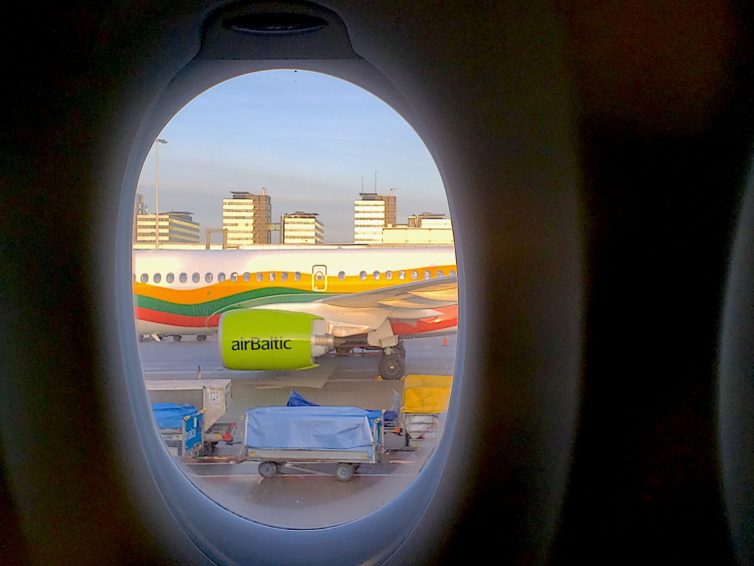
An airBaltic A220, with the Lithuanian flag livery. Photo: Jonathan Trent-Carlson
Just a few days ago, I published my experience flying in airBaltic’s economy class on my flight from Amsterdam (AMS) to Vilnius (VNO). After after some great adventures in Lithuania, I was ready to hit the skies again — but this time in the front of the (air) bus — I was flying in airBaltic’s Business Class. I was excited to see how it would compare to economy and see how a low cost carrier would handle a premium product.
The airBaltic check-in & lounge experience at VNO
Check-in at VNO was quick and easy. VNO does not have dedicated counter space for any one airline. Rather, overhead monitors display which check-in counter is for which airline at that time, and signage can be moved around.
After I had checked my bag and gotten through security, I wandered through a large section of duty free items before finding the lounge. The lounge was mostly empty, and I didn’t have much time. The lounge featured a self-service bar, with some wine, Lithuanian herbal liqueurs, and other spirits.
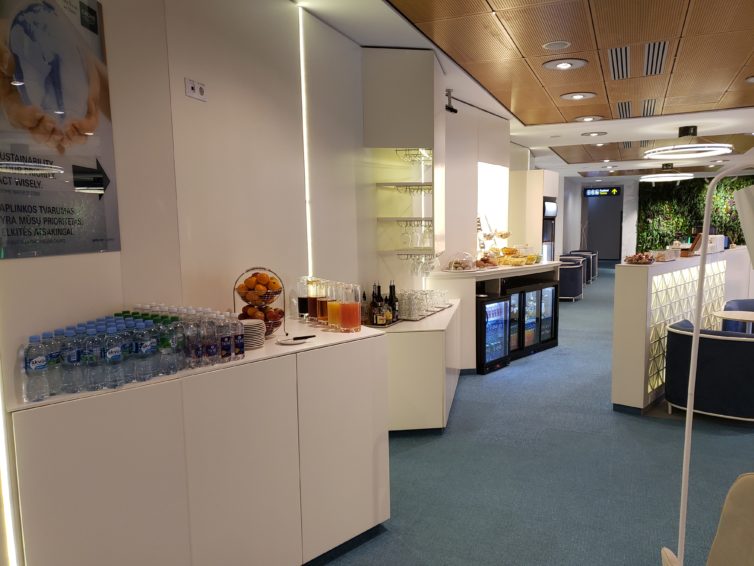
Beverages and breakfast pastries. A nice spread for this boutique lounge. Photo: Jonathan Trent-Carlson
There was a also a fancy coffee machine. At this early in the morning, I was not in the mood for alcohol but coffee was a must have. Specifically, coffee with two cubes of sugar.
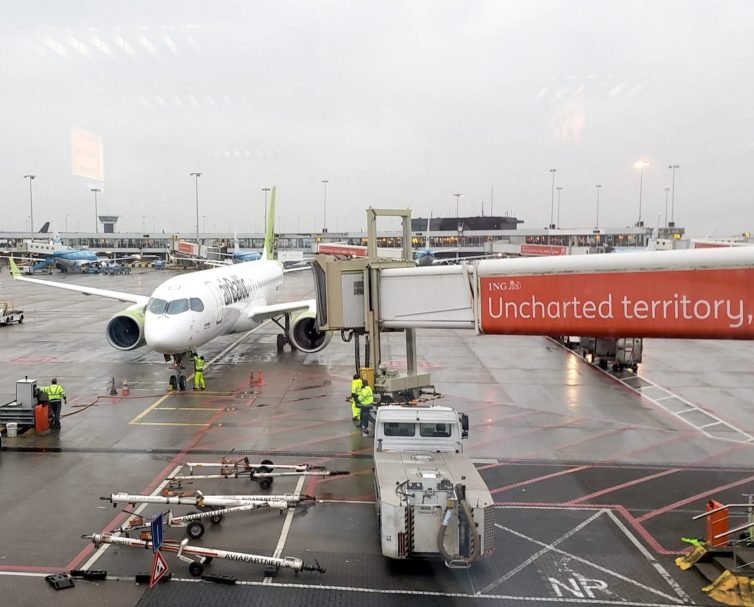
An airBaltic A220 pulls up to the gate at AMS. Photo: Jonathan Trent-Carlson
The advertisement on the jet bridge read “Uncharted Territory,” as an airBaltic Airbus 220-300 pulled in at Amsterdam’s Schipol Airport (AMS) in December of 2019. This was the plane that would be taking me into territory that was personally uncharted for me. First, I was flying to Vilnius (VNO), the capital of Lithuania, where I had never been. Second, it was a type of aircraft that I had never flown on before. Third, it was also on an airline that I had never flown before, airBaltic.
To Lithuania In Economy Class on airBaltic’s A220
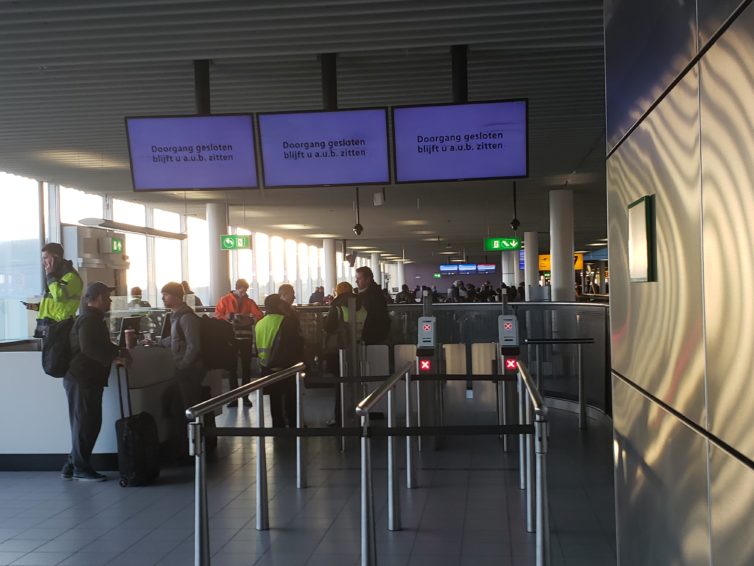
The boarding lanes prior to boarding. Photo: Jonathan Trent-Carlson
The boarding process at AMS involved lining up by fare class purchased, as displayed by overheard monitors. I lined up in the economy line, scanned my boarding pass, and walked down the jetway, towards uncharted territory. As I boarded the plane, I was struck by how spacious the cabin felt. At 6’2″, there was plenty of space for me to stand up.
The seats were arranged in a 3-2 configuration, similar to old McDonnell Douglas models. The windows were larger than those in preceding narrow body aircraft models. This allowed enough natural light into the cabin that the overhead lighting almost made no difference. The interior was mostly a light gray with neon green accents. Between the amount of natural light and the color scheme, the cabin gave off the feeling that you were almost in a modern day office.
I made my way past the first two rows, which were in the business class cabin, to row 14. Seat 14F was on my left, the side with three seats in the row. As it is an exit row seat, my bags had to go in the overhead bin rather than beneath the seat in front of me. AirBaltic equipped their A220s with Airbus’ Airspace bins, ensuring plenty of room for everyone’s carryon luggage. I put my bags in the bin and sat down.
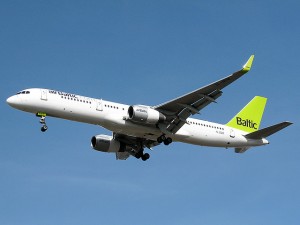
airBaltic Boeing 757-200 (YL-BDB)
airBaltic was founded in 1995 and is owned by the government of Latvia. The low cost carrier was founded with a single Saab 340 and they received their first Boeing 737 in 2004. Now airBaltic has a fleet of 34 aircraft consisting of two Boeing 757-200s, eight 737-500s, eight 737-300s, 10 Fokker-50s and eight Bombardier Q400s.
Their livery is simple, but it works. The tail, winglets and landing gear doors go well together all being green. It does seem odd with the engine cowls only being silver in the front.




